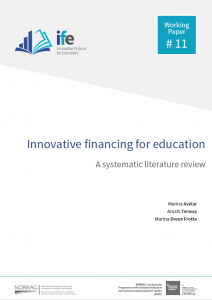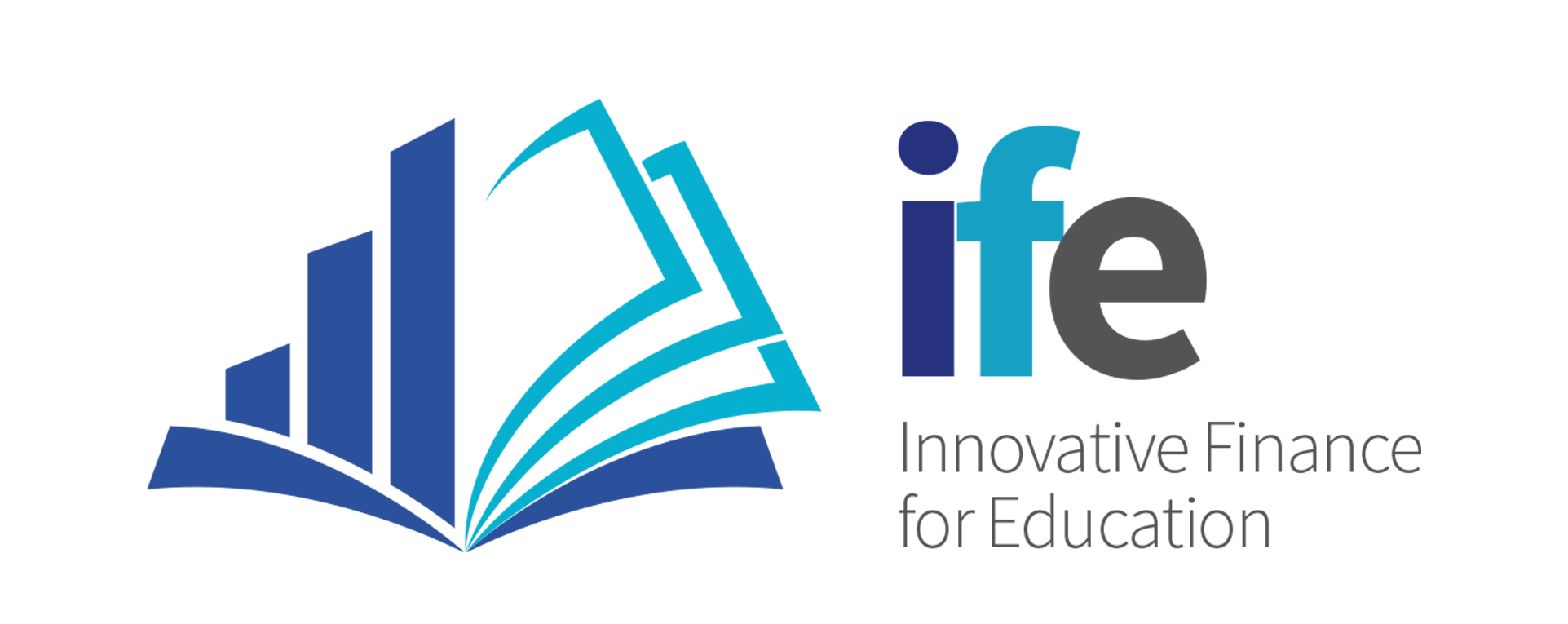New NORRAG publications build knowledge on Innovative Finance experiences in the education sector
 NORRAG has just released brand new publications on the topic of Innovative Finance for Education (IFE).
NORRAG has just released brand new publications on the topic of Innovative Finance for Education (IFE).
The publications are a result of the “Innovative Financing in Education and Development: Case Studies and Multi-Media Material for E-Learning” project, which is partially funded by the swissuniversities Development and Cooperation Network (SUDAC) under the development of ‘Consortia for Education and Research (COFER)’. The project consortium is composed by the following partners: NORRAG (Switzerland), University of Fribourg (Switzerland), Zurich University of Teacher Education (Switzerland), Universidad Nacional de General Sarmiento in Buenos Aires (Argentina), Beijing Normal University (China), Tata Institute of Social Sciences in Mumbai (India) and University of Cape Town (South Africa). Additional funding and resources were provided by the Open Societies Foundation (OSF) and the Swiss Agency for Development and Cooperation (SDC). NORRAG and the global network of six partner universities engaged in this two-year project to research and develop cutting-edge multimedia material for teaching and e-learning on the underexplored topic of innovative financing in education and development.
The publications now available include working papers, animation videos and case studies, which present the results of research about diverse IFE experiences in the Global South. They are part of NORRAG’s efforts to build empirical evidence on the use of innovative financing in improving provision, quality and equity in education.
The first working paper “Innovative financing for education: a systematic literature review” is the result of a review of over 130 publications on the topic. It explores how Innovative Finance (IF) has been conceptualized in the field of education and the types of mechanisms that have been explored so far. The paper also provides an analysis of the benefits and challenges of IFE as described in the literature.
The publication of a series of animation videos on IF goes in the same direction of deepening the collective knowledge on how IF mechanisms can be utilised in the education sector. The video animations describe and illustrate in a simple way how some of these mechanisms operate. They explore the financing challenges addressed by each mechanism, as well as how they propose to tackle such issues. The described mechanisms include income contingent loans, income-share agreements, microfinance, advance market commitment, impact investment, debt swaps, education bonds, remittances, and parametric disaster insurance. In addition, an introductory motion animation explains the rationale behind the need for innovative financing in the education sector.
Finally, to explore and illustrate how these mechanisms work in practice, several case studies portray how IFE has been implemented in diverse contexts in the Global South. The cases tell the story behind the design and implementation of various mechanisms, shedding light on the financing challenges they address. The case studies published fall into two different categories – short cases and in-depth case studies. The short case studies published present examples of a development impact bond in India, other results-based financing mechanism in Tanzania, income-share agreements in Latin America, education bonds in Latin America and the Caribbean, venture philanthropy, debt swaps between Spain and Latin America, microfinance in Ghana and Kenya, and the creation of new funds and financing organisations. The first field-based case study of the series analyses the India Education Outcomes Fund, an initiative of Social Financial India. The working paper has been developed by Tata Institute of Social Sciences (TISS), Mumbai, with the financial support of NORRAG. It showcases the use of results-based financing and the process of establishing a platform for providing sustainable and innovative funding at scale, focused on outcomes. In the coming months, several other in-depth case studies will be published to enable further learning in the sector from the existing experience in implementing innovative financing projects in education.
Taken together, these publications analyse technical aspects of complex financing design of IF mechanisms, while critically considering diverse perspectives, opportunities, and challenges in utilising these mechanisms for SDG4, and examining the complexities that emerge in the conceptualization and application to the field of education. They contribute to NORRAG’s endeavour to develop capacity and deepen collective knowledge about the mounting numbers and modalities of IF in the education sector.
Further case studies will be released in the next few months, enlarging and enriching NORRAG’s contribution to the discussion around IFE.
Need for Improving Education Financing (Innovative Finance for Education
Within the education sector, funds are needed for a range of policies and activities to operate the education system while also to improve the quality of education. But in many countries, the contribution of parents and households can be significant. This video explains why both domestic and international funding for education needs to increase drastically in order to reach the target defined by the UN.
Income Share Agreements (Innovative Finance for Education)
Many countries are facing an education financing dilemma: while there is a global growing demand for post-secondary education, most countries cannot afford to offer it free-of-charge for all.
Advance Market Commitment (Innovative Finance for Education)
An advance market commitment mechanism can be used in the context of market failure where the quantity of a product supplied by producers does not meet the quantity demanded by the users.
Debt Swap (Innovative Finance for Education)
Loans can allow countries to access funding for specific development projects, but may also leave them indebted, limiting their capacity to fund education. See how a debt swap can relief national debts and thus play an important role in filling the gap in funding for education.
Income Contingent Loan (Innovative Finance for Education)
With a global growing demand for higher education and while traditional student loans have become a globally used approach, many countries have also experienced issues around high student loan debt, incurring in national crisis in some cases.
Harnessing Remittances (Innovative Finance for Education)
Harnessing remittances: an innovative way of increasing education funding or redirecting existing funds towards the education sector.
Social Impact Investment (Innovative Finance for Education)
See how social impact investment can be used in education to provide funds to private companies providing educational services.
Microfinance (Innovative Finance for Education)
Some education providers need financing support to develop or expand their services. However, they often face difficulties accessing financial services due to their size or activity. In this video, discover how microfinance can serve as one possible solution. This video explains why both domestic and international funding for education need to increase drastically in order to reach the target defined by the UN.
Parametric Disaster Insurance (Innovative Finance for Education)
Disaster events like earthquakes, drought, armed conflict, financial crises and civil unrest often disrupt education systems. Learn throughout this animation how a Disaster Risk Insurance with donor funding could alleviate the problem.
Education Bonds (Innovative Finance for Education)
Discover how education bonds can be structured to bring funds from investors into the education sector.

